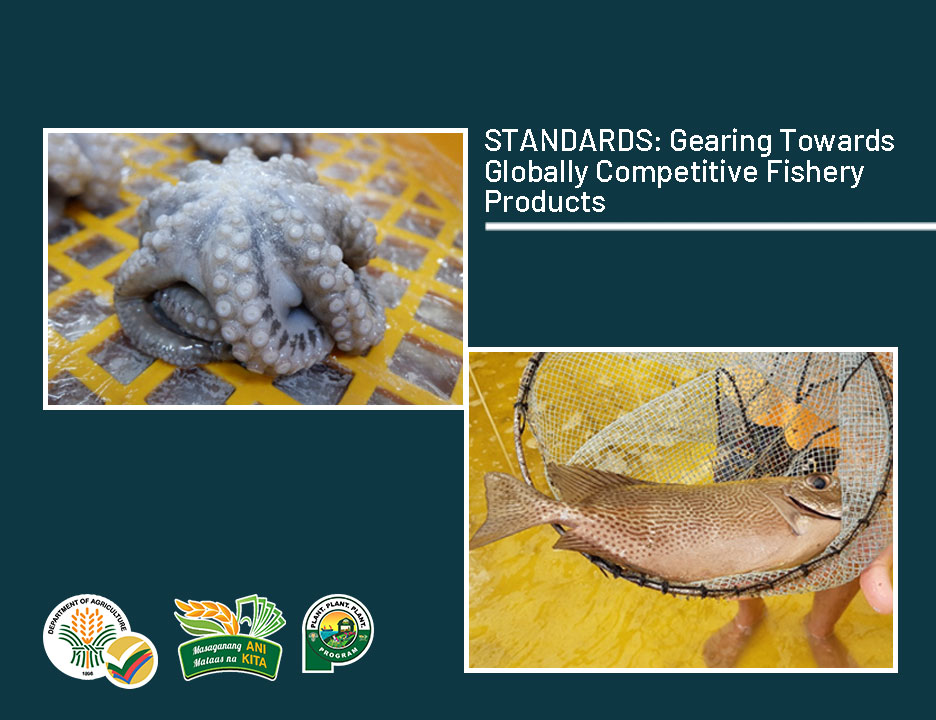
 December 17, 2020. According to the Food and Agriculture Organization (FAO), the fisheries and aquaculture sector is the key to ensure a food secure future for all. The role of aquaculture in ensuring a sustainable supply of fish and fishery products for human consumption cannot be overstated. Along with the positive aspects of aquaculture comes the negative ones. Fish farms can pollute water systems and contribute to environmental degradation due to improper site selection. However, these negative impacts can be addressed by adopting standards that provide measures to attain recommended quality, ensure food safety, secure environmental management, and protect worker’s health and welfare.
December 17, 2020. According to the Food and Agriculture Organization (FAO), the fisheries and aquaculture sector is the key to ensure a food secure future for all. The role of aquaculture in ensuring a sustainable supply of fish and fishery products for human consumption cannot be overstated. Along with the positive aspects of aquaculture comes the negative ones. Fish farms can pollute water systems and contribute to environmental degradation due to improper site selection. However, these negative impacts can be addressed by adopting standards that provide measures to attain recommended quality, ensure food safety, secure environmental management, and protect worker’s health and welfare.
 The DA-Bureau of Agriculture and Fisheries Standards (BAFS) is the lead agency in developing Philippine National Standards (PNS) for fresh and primary fish and fishery products. This task was authorized by the different laws such as Republic Act (RA) 8435 or Agriculture and Fisheries Modernization Act (AFMA) of 1997, RA 10611 or Food Safety Act of 2013, RA 10068 or Organic Agriculture Act of 2011, and RA 10817 or Philippine Halal Export Development and Promotion Act of 2016.
The DA-Bureau of Agriculture and Fisheries Standards (BAFS) is the lead agency in developing Philippine National Standards (PNS) for fresh and primary fish and fishery products. This task was authorized by the different laws such as Republic Act (RA) 8435 or Agriculture and Fisheries Modernization Act (AFMA) of 1997, RA 10611 or Food Safety Act of 2013, RA 10068 or Organic Agriculture Act of 2011, and RA 10817 or Philippine Halal Export Development and Promotion Act of 2016.
One of the distinct standards that aids the aquaculture and fishery sector is the Good Aquaculture Practices (GAqP). This code covers the practices that aim to prevent or minimize the risk associated with aquaculture production (coastal aquaculture – mariculture and brackish-water culture; and freshwater culture). Following this standard provides not only a quality and safe fish and fishery products but also increases market edge in global competitiveness with other countries.
To date, the Bureau has developed 34 PNS related to Fisheries. These 34 PNS is broken down into: product standards (25 PNS) and code of practice (9 PNS) (Figure 3). These PNS can still be further grouped based on its objective (Figure 4): to establish quality (4 PNS) and to ensure food safety (30 PNS). The commodities for fisheries standards (Figure 5) include finfish (13 PNS), crustaceans (8 PNS), molluscs (8 PNS), echinoderm (1 PNS), aquatic plants (2 PNS), general standard for GAqP (1 PNS), and aquaculture feeds (1 PNS).



However, attaining food security and productivity for our fisherfolk does not end by developing a PNS. The standards should be translated into technical regulations and guidelines that will provide implementation and enforcement. In the fishery sector, this role lay on the responsibility of the Bureau of Fisheries and Aquatic Resources (BFAR). BFAR is the government agency responsible for the development, improvement, management and conservation of fisheries and aquatic resources in the Philippines. It is also the lead agency for the establishment of GAqP upon the directive from the ASEAN Economic Community (AEC).
Hence, achieving a sustainable and globally competitive fish and fishery products is not an easy task. Nevertheless, DA-BAFS continuously contributes to improve the aquaculture and fishery sector by developing product standards for fish and fishery enterprise.
